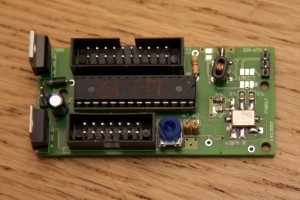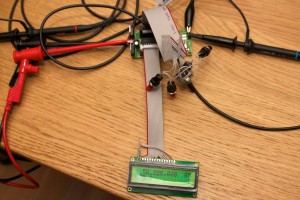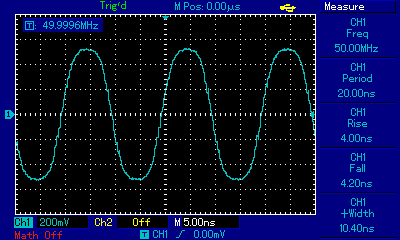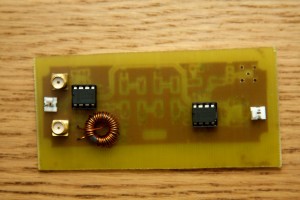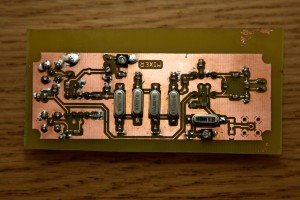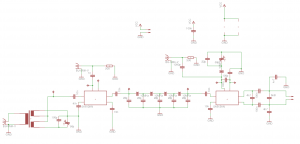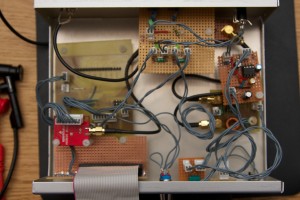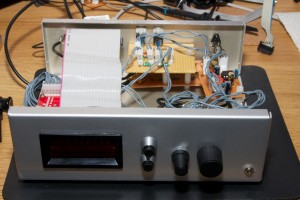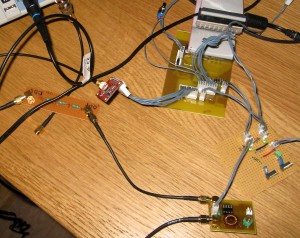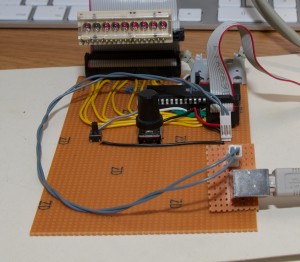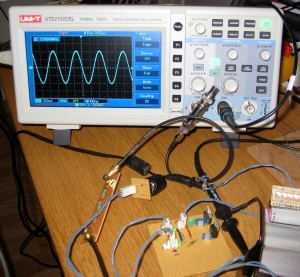VHF VFO
I bought a VFO kit by PA0KLT based on the SI570 from SDR-kits. It was very easy to assemble although I dislike winding the transformer. Here is an image of it completely soldered. I also bought an extra Si570 to use in future projects of my own.
Connecting the display and buttons resulted in this mess, but it seems to work fine. It is possible to generate frequencies from somewhere around a few MHz to 280 MHz but since my oscilloscope only handles signals up to 100MHz I settled for 50MHz for the images here.
And finally, the signal on my oscilloscope.

